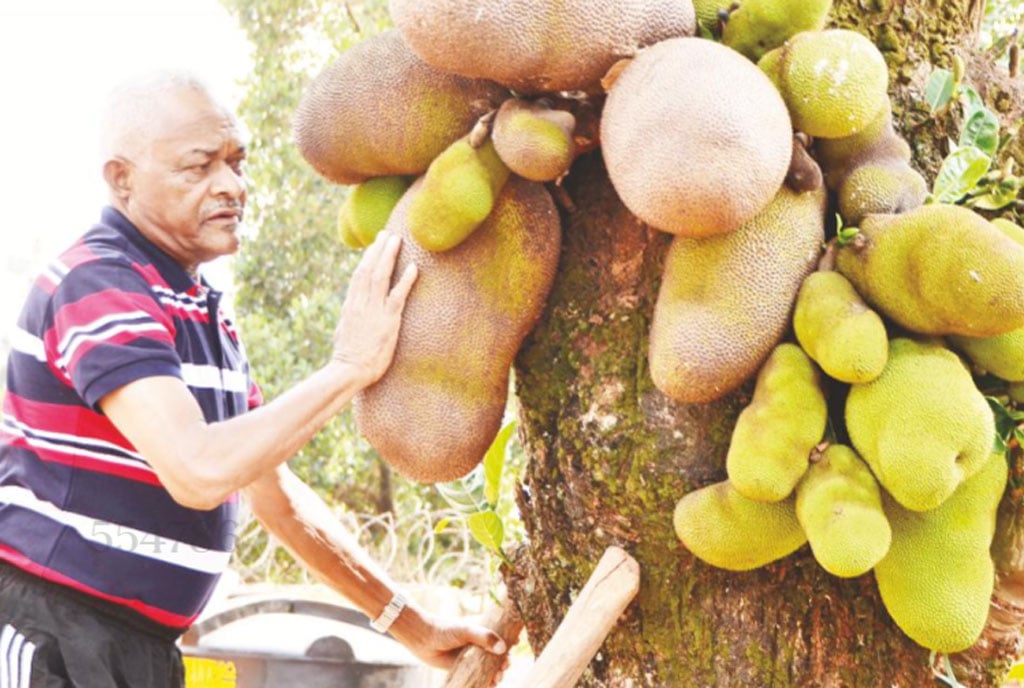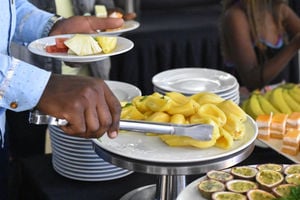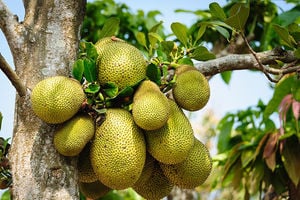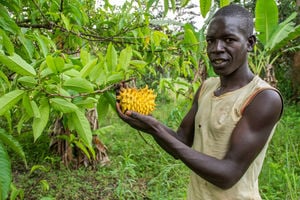
Jackfruit farmers will be able to harvest fruits two years after planting. PHOTO/FILE
Jackfruit, whose scientific name is Artocarpus heterophyllus Lam, has potential to reduce food and nutrition insecurity for both rural and urban communities in various parts of the world.
Studies have shown that jackfruit is rich in both macro and micronutrients including carbohydrates, proteins, vitamins as well as minerals that could be a valuable part of food.
Other parts of jackfruit trees including fruits, leaves and bark have also been extensively used in traditional medicine due to their anti-carcinogenic, antimicrobial antifungal, anti-inflammatory, wound healing, and hypoglycemic effects.
In a publication in Science Direct journals by Ugandan Scientists from the National Agricultural Forestry Resources Research Institute (NaFORRI) led by Judith Ssali Natongo, the team carried out a study about variation in seed and seedling traits of the different traditional varieties of jackfruit, a potential fruit tree species for food security and the details are below.
Background
In response to the increasing economic value of jackfruits, Naro has developed a protocol for grafting jackfruit, reducing the fruiting time from five to two years.
Naro has also profiled the existing jackfruit ethno-varieties for pulp proximate composition. This will guide the selection from the four known ethno-varieties namely, kananansi (yellow/orange), namata (white), namusayi (red) and serebera which is soft for value addition and industrialisation.
The scientists who conducted this research contend that in Uganda, there is a deliberate effort to increase jackfruit production through establishment of orchards.
Currently the trees are commonly found as scattered agroforestry trees managed by small-holder farmers, propagated through seed.
Planting is often done by transplanting already germinated seedlings within the area. Non-deliberate planting is however met by germination constraints where the varieties that easily germinate, emerge and establish are more likely to be found on farms.
This not only threatens the diversity of the difficult to germinate varieties, but it also impedes the potential nutritional benefits that could be derived from the diversity of the jackfruits.
Although closely related individuals should share similar germination times, studies have also indicated the existence of developing constraints on seed traits as well as seed germination within a genus or family.
Whether this is present in jackfruit still needs to be confirmed. Therefore, the objectives of the study were to examine the specific differences in seed and seedling traits of Jackfruit traditional varieties and to assess the potential of separating the varieties of jackfruit based on phenotypic traits of seedlings.
The prefix ‘ethno’ refers to traditional knowledge and cognition available in a given culture. The concept of traditional variety can therefore be defined as the infra-specific diversity, especially in crop plants as understood and managed by farmers. By understanding the variability in seeds and seedlings, it is possible to develop strategies to increase production of preferred traditional varieties for both small-holder farmers and jackfruit orchards.
This is very vital especially following studies that have highlighted little success with vegetative propagation of jackfruit, which has been attributed to the high sap in the plant.
Seed sampling
The scientists sampled Jackfruit seeds based on the existing ethno-varieties which include white, yellow, orange, red and soft types in the Eastern agro-ecological zone of the country of Uganda.
The number of sampled trees per ethno-variety ranged from 9 to 12 depending on the availability of reproductively mature individuals at the time of seed collection. Two fully ripened fruits from each tree were harvested and seeds extracted.
A minimum of 100 seeds were extracted from each fruit and the seeds from the trees belonging to the same ethno-variety were mixed to form a composite sample.
Seeds were stored in cool boxes according to ethno-variety and then transported to the laboratory at the National Forestry Resources Research Institute (NaFORRI).
Research process and results
The team notes that a key component of the performance of plant seed is the germination capability as well as seedling survival and vigor. Seed traits from five jackfruit ethno-varieties from specific diversity as understood and managed by farmers were assessed.
A greenhouse experiment was conducted to determine the survival of seeds, emergence and germination rate.
Seeds from different traditional varieties differed in their length where the difference was highest between seeds from white, orange or yellow varieties.
Key fact
The bulbs of jackfruits contain simple sugars (fructose and sucrose) that constitute about 19.8 grammes per 100 grammes of edible jackfruit bulbs and in total provide 95 calories.
They are therefore a good source of energy for human beings. The fruit is rich in dietary fibre, which is important for good digestive health and promotes regular bowel movements.




